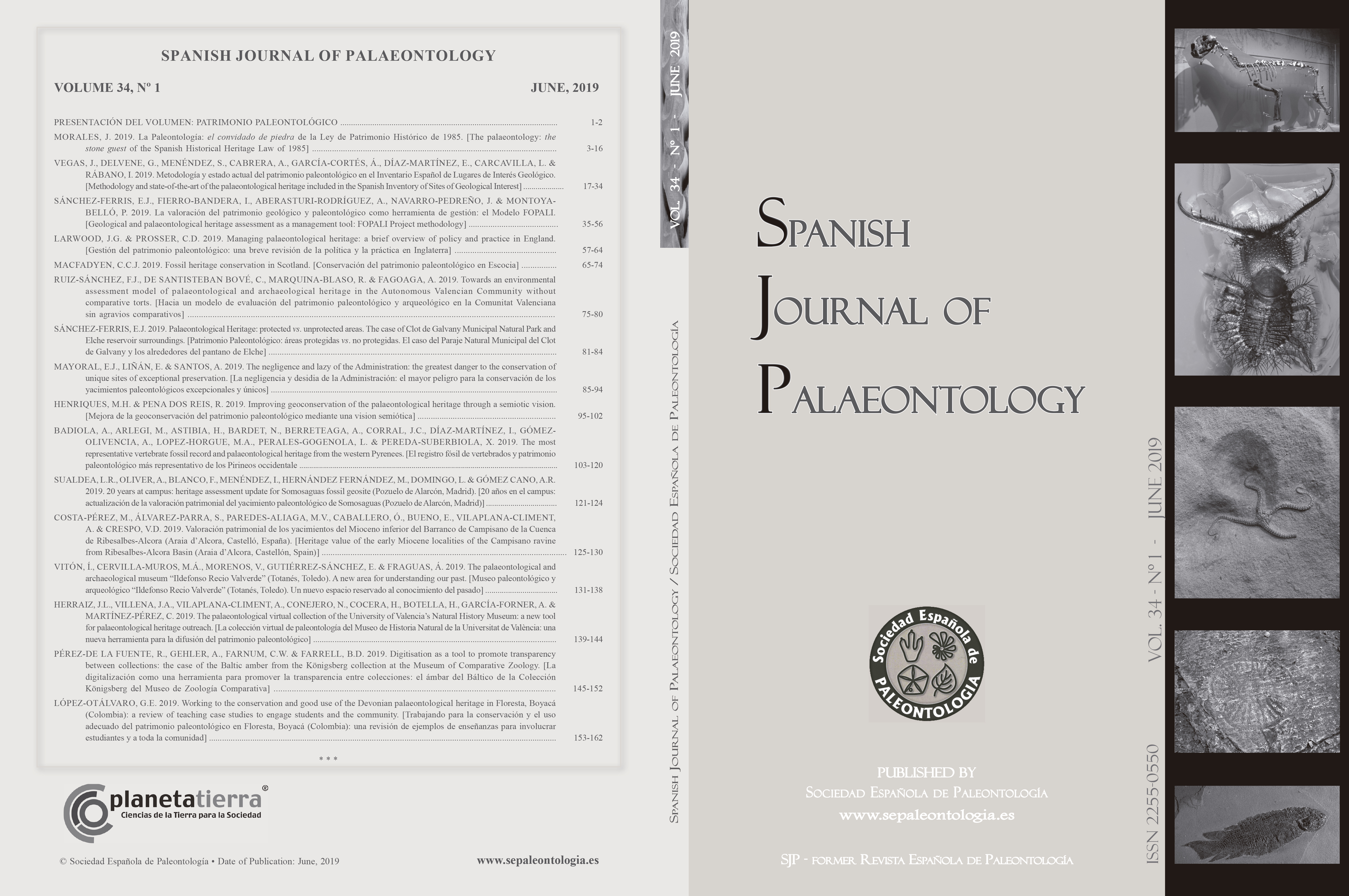Improving geoconservation of the palaeontological heritage through a semiotic vision
DOI:
https://doi.org/10.7203/sjp.34.1.15248 Abstract
Abstract
The panoply of reasons that may attract people to fossils, which result from the meaning they attribute to these palaeontological objects, may contribute to endangering of the integrity of the fossil record. Semiotics can be of great help to assist geoconservation actions, usually based only on expertise statements, and are of particular relevance in palaeontological heritage inventory, evaluation, conservation, valuation and monitoring procedures. This work argues that fossils can be envisaged as signs displaying different meanings among experts and non-specialists. Such meanings support the heritage contents and values attributable to any palaeontological object and are affected by the relevance of the meanings assigned to the objects by the scientific communities (relevance grade), and the public understanding of such meanings as result of socialization and education (abstract perceptiveness). This integrated approach to the palaeontological heritage will be the most effective way involving the community in all geoconservation actions and will promote the sustainable use of fossils as natural resources by actors other than palaeontologists.
 Downloads
Downloads
Downloads
Published
How to Cite
-
Abstract433
-
PDF213
Issue
Section
License
![]()
This is an open-access article distributed under the terms of the Creative Commons Attribution 4.0 International License.



